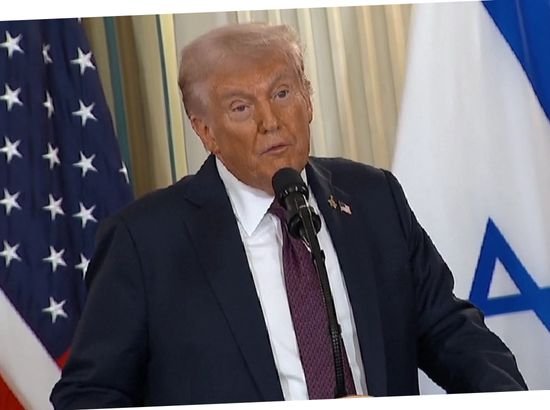Trump’s Gaza Peace Plan: A Significant Step, But Obstacles Remain
September 30, 2025 4:12 PM
Trump’s Gaza Peace Plan: A Significant Step, But Obstacles Remain
Donald Trump and Israeli Prime Minister Benjamin Netanyahu unveiled a 20-point peace proposal for Gaza on Monday, with Trump calling it a potential step toward “eternal peace in the Middle East.” While a major diplomatic move that increases pressure on Israel, its success hinges on fundamental issues for both Israelis and Palestinians.
The Proposal and the Obstacles
The plan is a framework for further negotiations, not a final, detailed agreement. It borrows elements from previous proposals and was drafted after consulting with Israel, European, and Arab countries.
Key Principles of the Plan:
- Ceasefire & Withdrawal: Calls for an immediate halt to fighting and a limited withdrawal of Israeli forces.
- Hostage & Prisoner Exchange: Demands Hamas release all remaining hostages, followed by Israel releasing Palestinian prisoners.
- Hamas & Security: Requires Hamas to disarm and renounce governance. Members who commit to peaceful coexistence would receive amnesty; others would be exiled.
- Post-War Governance: Envisions a local, technocratic administration in Gaza, overseen by a “Board of Peace” chaired by Donald Trump and including former UK Prime Minister Sir Tony Blair.
- International Force: An international “stabilisation” force led by the US and Arab countries would secure Gaza and ensure the demilitarisation of Palestinian armed factions.
- Non-Occupation: Includes the crucial clause that “Israel will not occupy or annex Gaza,” though it also states Israel will maintain a security perimeter.
- Palestinian Statehood: Mentions that if the Palestinian Authority is reformed, conditions “may finally be in place for a credible pathway to Palestinian self-determination and statehood”—a vague, non-committal mention.
The Fundamental Obstacles:
- Hamas’s Stance: A preliminary pessimistic assessment from a Hamas figure suggested the group would reject any plan that does not guarantee Israel’s full withdrawal from Gaza.
- Netanyahu’s Political Survival: While Netanyahu accepted the 20 principles, a far-right element of his coalition has already expressed rejection of some clauses. Domestic critics suggest the prime minister has a history of derailing deals that threaten his political position.
- Ambiguity: There is enough ambiguity in the framework for either Israel or Hamas to appear to accept it while using subsequent detailed negotiations to sabotage the process.
The Ultimatum and Diplomatic Shifts
Trump made it clear where the US stands, telling Netanyahu that if Hamas refuses the proposal, Israel would have America’s “full backing to do what you would have to do” to destroy the group.
In a significant diplomatic move shortly before the announcement, Trump secured an apology from Netanyahu to Qatar regarding a recent Israeli airstrike that targeted Hamas leadership in Doha. This action is intended to bring Qatar back on board as a mediator.
The announcement comes as Israeli forces intensify their offensive in Gaza City, which Israel states is necessary to pressure Hamas but has led to further devastation for civilians. European and Arab nations view this US framework as a chance to shift momentum back toward a negotiated political track and alleviate Israel’s growing international isolation.
Have something to say? Post your comment
